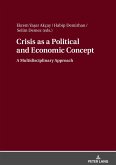The Ottoman and Habsburg Empires both faced the "general crisis" of the 17th century. Yet they responded to the crisis very differently. The Habsburgs centralized fiscal structures, which would facilitate economic development in the 19th century. The Ottomans, which initially had more centralized tax collection, opted for decentralization, paving the way for economic peripheralization. To account for this puzzle, this book offers a political-economic theory of institutional change that focuses on the structure and intensity of elite conflict over the distribution of resources. Using the comparative-historical method, the book demonstrates that high levels of conflict generated political incentives for centralization, and where such incentives were lacking, decentralization followed.
Bitte wählen Sie Ihr Anliegen aus.
Rechnungen
Retourenschein anfordern
Bestellstatus
Storno








